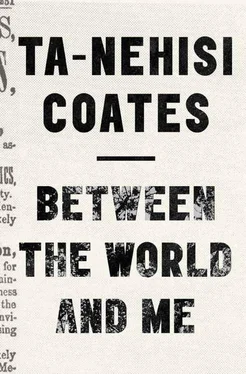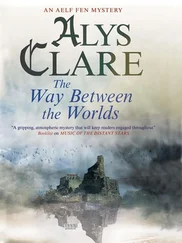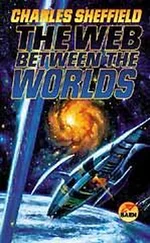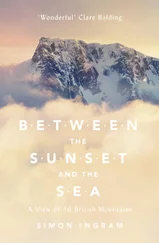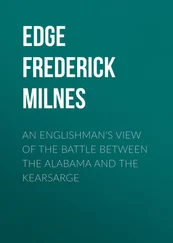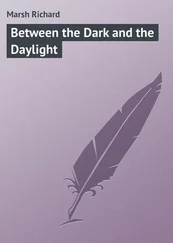I first witnessed this power out on the Yard, that communal green space in the center of the campus where the students gathered and I saw everything I knew of my black self multiplied out into seemingly endless variations. There were the scions of Nigerian aristocrats in their business suits giving dap to bald-headed Qs in purple windbreakers and tan Timbs. There were the high-yellow progeny of AME preachers debating the clerics of Ausar-Set. There were California girls turned Muslim, born anew, in hijab and long skirt. There were Ponzi schemers and Christian cultists, Tabernacle fanatics and mathematical geniuses. It was like listening to a hundred different renditions of “Redemption Song,” each in a different color and key. And overlaying all of this was the history of Howard itself. I knew that I was literally walking in the footsteps of all the Toni Morrisons and Zora Neale Hurstons, of all the Sterling Browns and Kenneth Clarks, who’d come before. The Mecca — the vastness of black people across space-time — could be experienced in a twenty-minute walk across campus. I saw this vastness in the students chopping it up in front of the Frederick Douglass Memorial Hall, where Muhammad Ali had addressed their fathers and mothers in defiance of the Vietnam War. I saw its epic sweep in the students next to Ira Aldridge Theater, where Donny Hathaway had once sung, where Donald Byrd had once assembled his flock. The students came out with their saxophones, trumpets, and drums, played “My Favorite Things” or “Someday My Prince Will Come.” Some of the other students were out on the grass in front of Alain Locke Hall, in pink and green, chanting, singing, stomping, clapping, stepping. Some of them came up from Tubman Quadrangle with their roommates and rope for Double Dutch. Some of them came down from Drew Hall, with their caps cocked and their backpacks slung through one arm, then fell into gorgeous ciphers of beatbox and rhyme. Some of the girls sat by the flagpole with bell hooks and Sonia Sanchez in their straw totes. Some of the boys, with their new Yoruba names, beseeched these girls by citing Frantz Fanon. Some of them studied Russian. Some of them worked in bone labs. They were Panamanian. They were Bajan. And some of them were from places I had never heard of. But all of them were hot and incredible, exotic even, though we hailed from the same tribe.
The black world was expanding before me, and I could see now that that world was more than a photonegative of that of the people who believe they are white. “White America” is a syndicate arrayed to protect its exclusive power to dominate and control our bodies. Sometimes this power is direct (lynching), and sometimes it is insidious (redlining). But however it appears, the power of domination and exclusion is central to the belief in being white, and without it, “white people” would cease to exist for want of reasons. There will surely always be people with straight hair and blue eyes, as there have been for all history. But some of these straight-haired people with blue eyes have been “black,” and this points to the great difference between their world and ours. We did not choose our fences. They were imposed on us by Virginia planters obsessed with enslaving as many Americans as possible. They are the ones who came up with a one-drop rule that separated the “white” from the “black,” even if it meant that their own blue-eyed sons would live under the lash. The result is a people, black people, who embody all physical varieties and whose life stories mirror this physical range. Through The Mecca I saw that we were, in our own segregated body politic, cosmopolitans. The black diaspora was not just our own world but, in so many ways, the Western world itself.
Now, the heirs of those Virginia planters could never directly acknowledge this legacy or reckon with its power. And so that beauty that Malcolm pledged us to protect, black beauty, was never celebrated in movies, in television, or in the textbooks I’d seen as a child. Everyone of any import, from Jesus to George Washington, was white. This was why your grandparents banned Tarzan and the Lone Ranger and toys with white faces from the house. They were rebelling against the history books that spoke of black people only as sentimental “firsts”—first black five-star general, first black congressman, first black mayor — always presented in the bemused manner of a category of Trivial Pursuit. Serious history was the West, and the West was white. This was all distilled for me in a quote I once read from the novelist Saul Bellow. I can’t remember where I read it, or when — only that I was already at Howard. “Who is the Tolstoy of the Zulus?” Bellow quipped. Tolstoy was “white,” and so Tolstoy “mattered,” like everything else that was white “mattered.” And this view of things was connected to the fear that passed through the generations, to the sense of dispossession. We were black, beyond the visible spectrum, beyond civilization. Our history was inferior because we were inferior, which is to say our bodies were inferior. And our inferior bodies could not possibly be accorded the same respect as those that built the West. Would it not be better, then, if our bodies were civilized, improved, and put to some legitimate Christian use?
Contrary to this theory, I had Malcolm. I had my mother and father. I had my readings of every issue of The Source and Vibe . I read them not merely because I loved black music — I did — but because of the writing itself. Writers Greg Tate, Chairman Mao, dream hampton — barely older than me — were out there creating a new language, one that I intuitively understood, to analyze our art, our world. This was, in and of itself, an argument for the weight and beauty of our culture and thus of our bodies. And now each day, out on the Yard, I felt this weight and saw this beauty, not just as a matter of theory but also as demonstrable fact. And I wanted desperately to communicate this evidence to the world, because I felt — even if I did not completely know — that the larger culture’s erasure of black beauty was intimately connected to the destruction of black bodies.
What was required was a new story, a new history told through the lens of our struggle. I had always known this, had heard the need for a new history in Malcolm, had seen the need addressed in my father’s books. It was in the promise behind their grand titles— Children of the Sun, Wonderful Ethiopians of the Ancient Kushite Empire, The African Origins of Civilization . Here was not just our history but the history of the world, weaponized to our noble ends. Here was the primordial stuff of our own Dream — the Dream of a “black race”—of our own Tolstoys who lived deep in the African past, where we authored operas, pioneered secret algebra, erected ornate walls, pyramids, colossi, bridges, roads, and all the inventions that I then thought must qualify one’s lineage for the ranks of civilization. They had their champions, and somewhere we must have ours. By then I’d read Chancellor Williams, J. A. Rogers, and John Jackson — writers central to the canon of our new noble history. From them I knew that Mansa Musa of Mali was black, and Shabaka of Egypt was black, and Yaa Asantewaa of Ashanti was black — and “the black race” was a thing I supposed existed from time immemorial, a thing that was real and mattered.
When I came to Howard, Chancellor Williams’s Destruction of Black Civilization was my Bible. Williams himself had taught at Howard. I read him when I was sixteen, and his work offered a grand theory of multi-millennial European plunder. The theory relieved me of certain troubling questions — this is the point of nationalism — and it gave me my Tolstoy. I read about Queen Nzinga, who ruled in Central Africa in the sixteenth century, resisting the Portuguese. I read about her negotiating with the Dutch. When the Dutch ambassador tried to humiliate her by refusing her a seat, Nzinga had shown her power by ordering one of her advisers to all fours to make a human chair of her body. That was the kind of power I sought, and the story of our own royalty became for me a weapon. My working theory then held all black people as kings in exile, a nation of original men severed from our original names and our majestic Nubian culture. Surely this was the message I took from gazing out on the Yard. Had any people, anywhere, ever been as sprawling and beautiful as us?
Читать дальше
